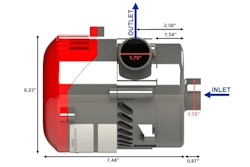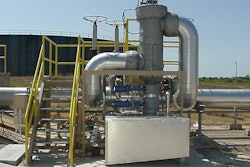
NEW YORK — Americans last year clearly didn’t opt for that second glass of wine. Total wine in the US decreased in 2019 (for the first time in 25 years), posting a -0.9% volume loss from the year prior, according to preliminary figures released this month by IWSR Drinks Market Analysis, the leading authority on data and intelligence on the global beverage alcohol market.
Also, for the fourth year in a row, beer volume in the US was down (-2.3%), as was cider (-3.8%); however, distilled spirits and ready-to-drink (RTD) products continued to post gains (+2.3% and +49.7%, respectively). Despite decreases in the beer category, which represents the lion’s share of alcohol sold in the US, total beverage alcohol in the country posted volume growth of 0.3% in 2019 (reversing a previous decline), with a value reaching $167bn (up 2.5% from 2018).

“The beverage alcohol industry in the US continued to innovate in 2019, especially in the ready-to-drink category, as the fight for consumption occasions intensified across all categories, something we fully expect to see in 2020 as well,” says Brandy Rand, Chief Operating Officer for the Americas at IWSR Drinks Market Analysis. “It’s also interesting to note that the value increase of beverage alcohol in the US continues to outpace volume growth, a clear indicator that US consumers are willing to pay for more premium products.”
First Wine Volume Decrease Since 1994
Though sparkling wine in the US grew last year by almost 4%, it wasn’t enough to offset the decrease in the large still wine category (-1.5%), which brought total wine down by -0.9%. The last volume loss in the category occurred in 1994, marking 24 years of growth before this most recent decline, and is attributed to changing generational habits. Wine represents about 11% of the total beverage alcohol market in the US.
Distilled Spirits Growth
Led by Agave, Whisky, Cognac…and Tito’s For the first time in over a decade, Smirnoff vodka is no longer the top-selling distilled spirit in America. That distinction is now owned by Tito’s Handmade Vodka, which increased in volume by over 20% in 2019 (vodka remains the largest spirit category by volume in the US). In total, spirits volume in the country grew by 2.3% last year, led by increases in mezcal (40%), Japanese whisky (23.1%), Irish whisky (8.6%), tequila (9.3%), US whiskey (5.5%), and cognac (4%).
RTDs Surge
Ready-to-drink products are an $8bn industry in the US, with volume that grew by almost 50% in 2019, thanks in large part to the tremendous popularity of hard seltzers (brands such as White Claw and Truly), which represent 43% of the total RTD category. As noted in the recent IWSR Hard Seltzer Report, hard seltzer volume is currently about 82.5m nine-liter cases and forecasted to triple by 2023. Prepared canned cocktails are another segment of RTD beverages that are achieving high levels of growth, as many of these products emulate what’s popular among hard seltzers – they’re convenient, flavorful and lower in calories and sugar.
Beer: Craft, Low/No Alcohol, and Imports Post Gains
With continued heightened competition from other categories, beer once again showed a decline in the US in 2019 (-2.3%). However, craft beer consumption increased last year by 4.1%, and low/no alcohol beer posted a gain of 6.6%. Imported beer increased 3.1%, while domestic beer dropped -3.6%. “The beer industry producers are diversifying by entering new categories – such as hard kombucha, hard seltzer, canned cocktails, and even spirits – to meet growing consumer demand for both convenience and better-for-you beverages,” says Rand.
E-commerce Increases
The 2019 IWSR US BAR database also includes research on the growing ecommerce market for beverage alcohol in America. That channel is expected to have reached $3bn in 2019, led particularly by wine sales, which have relatively fewer state-level restrictions. A recent IWSR report, A Blueprint for Success in the E-commerce Space for Alcoholic Beverages, forecasts that by 2024 beverage alcohol e-commerce in the US will reach 101.2m nine-liter cases, with an estimated value of $13.4bn.
“Online shopping in the US is a $755bn industry, and though alcohol represents a relatively small portion of that today, it’s expected to explode in the coming years,” says Adam Rogers, North America Research Director at IWSR. “Clearly, beverage alcohol brands and retailers should have strong ecommerce strategies in place to profit from this important shift in consumer purchase preference.”
To calculate these figures, the IWSR carefully collects and analyzes data from the trade with verification from supplier-provided financial releases and other proprietary data collection. This information is considered preliminary data (p) and is subject to revision with the official IWSR 2019 global database release in May 2020.






















